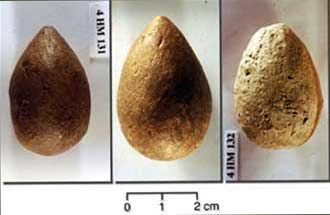Discover a vestige of the world's oldest battle
A few kilometers from the fighting areas in Iraq, the archaeologists from the University of Chicago (USA) and the Syrian art industry have discovered the remains of a battle that destroyed an ancient city in Mesopotamia (Northeastern Syria) ) in 3500 BC. Between the ruined bricks, they found hundreds of clay bullets used as weapons.
Excavation began in 1999 in northern Syria, but archaeologists have only gathered evidence of a battle arrayed in the area.
Between collapsed walls, burnt buildings, Clemens Reichel and his colleagues discovered traces of the resistance of Hamoukar residents. They had especially found a room with clay bullets surrounded by a clay basin that showed the attacked residents were struggling to fight. About 12 graves containing human bones have been found, possibly as victims in this war.
According to archaeologists, the world's oldest city attackers could come from southern Iraq, the cradle of Uruk culture. They ended Hamoukar's independence.

3 clay bullets are found in Hamoukar area
(Photo: nouvelobs.com)
The above excavations have proved Hamoukar can be built from stone shells (obsidienne), a kind of volcanic lava similar to glass. This stone originates from the Anatolie region but is processed at Hamoukar. Researchers claim that the craft has existed before in this ancient citadel. The vestiges of the copper revealed later that the city turned to another craft.
VN
- 6 most bloody battles in the history of world war
- Discover the oldest DNA man in North America
- 14 oldest ancient artifacts in the world
- The 6 most special battles of the Three Kingdoms, nearly 2000 years, have saved the history books (Part 1).
- Classic battles that change the history of the world
- Discover the oldest universe spiral galaxy
- 10 oldest antiquities in the world
- Discover the world's oldest
- Discover the oldest living place in the mountains
- Discover the world's oldest 'ice core' in Antarctica
- Discover the oldest of the elephants
- Discover the oldest dinosaurs?
 Discovered an ancient centipede fossil 99 million years old
Discovered an ancient centipede fossil 99 million years old Discovered bat-like dinosaurs in China
Discovered bat-like dinosaurs in China Discovered a 200-year-old bronze cannon of the coast
Discovered a 200-year-old bronze cannon of the coast Discover 305 million-year-old spider fossils
Discover 305 million-year-old spider fossils